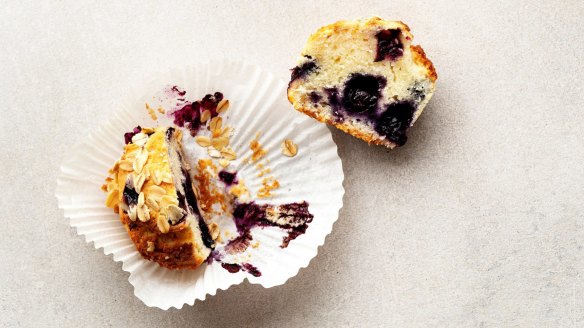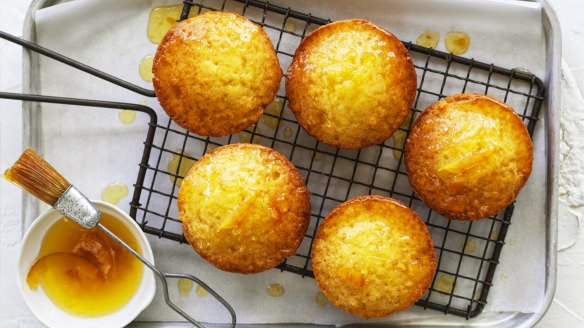The secret to making light and fluffy muffins

I am having trouble with rubbery muffins. E. Cole
I assume your muffin rubberiness refers to the American-style muffin, which is more a cupcake than the original small, yeasted English muffin. English muffins were traditionally sold by vendors from a tray carried on their head in the streets of pre-industrial England. They announced their arrival by singing out a particular ditty. Made with brewer's yeast and Hertfordshire white flour, muffins required some kneading to activate the gluten. Gluten forms when two types of protein in the flour, gliadin and glutenin, are combined with water to create long, elastic strands of protein. It is this that helps create muffins' honeycomb interior, which 18th-century cookbook writer Hannah Glasse so warmly praised. She wrote that muffins were to be toasted in front of the fire on the end of a fork and torn in half by hand, never cut with a knife.

American muffins didn't come about until the invention of chemical leavening agents; they were popularised with the creation of baking powder in the mid-1800s. A soft, generally sweet cake baked in a small mould or cup, muffins require the lightest hand when mixing the flour with wet ingredients to stop the long strands of gluten forming. The more you mix, the longer and stronger these strands become and the more rubbery your muffin becomes. The same goes for all baked goods – you want good gluten formation in breads but not in muffins, scones, pikelets or cakes. So once you have combined the fat with the dry ingredients, mix the wet ingredients only enough to bring the batter together. Then stop.
I bought some meat from the farmers' market in a compostable bag. I tried to compost the bags in the compost bin, but it won't break down. O. Hinde
Some compostable bags are made from starch, and some from polymer made with polylactic acid. Both will eventually break down in compost but not as quickly as garden mulch or kitchen waste. They do break down quickly in industrial-scale composting systems, where enzymes are added, and the temperature reaches above 50C. If you have a council bin with a composting stream, you can dispose of compostable food wrappers in them.
Why vegan wine? Isn't all wine vegan? P. Moala
In the south of Spain, where the sherry runs dry and the desserts drip with sugar syrup, there is a sweet dish made with egg yolks and sugar called tocino de cielo. It is my favourite, mainly because of the name, which means "fat from heaven". In the south of Spain, you will see many desserts and pastries made with egg yolks or yemas. That is because, traditionally, the egg whites were used to clarify the sherries. Just as chefs use a raft of egg whites to collect the proteins when clarifying a stock, egg white collects the proteins that form in wines, as does isinglass. This is a protein from the swim bladder of fish. Pour it into cloudy wine, and it forms a fine net that slowly sinks to the bottom, cleaning or "fining" the wine as it descends. Milk protein, gelatin and chitin, a fibre produced from crustacean cells, can also be used to fine wine. Vegan wines are fined with clay (bentonite), limestone, or a gel made from silica.
Send your vexing culinary conundrums to brainfood@richardcornish.com.au or tweet to @foodcornish
Appears in these collections
- More:
- Food
- Brain food
